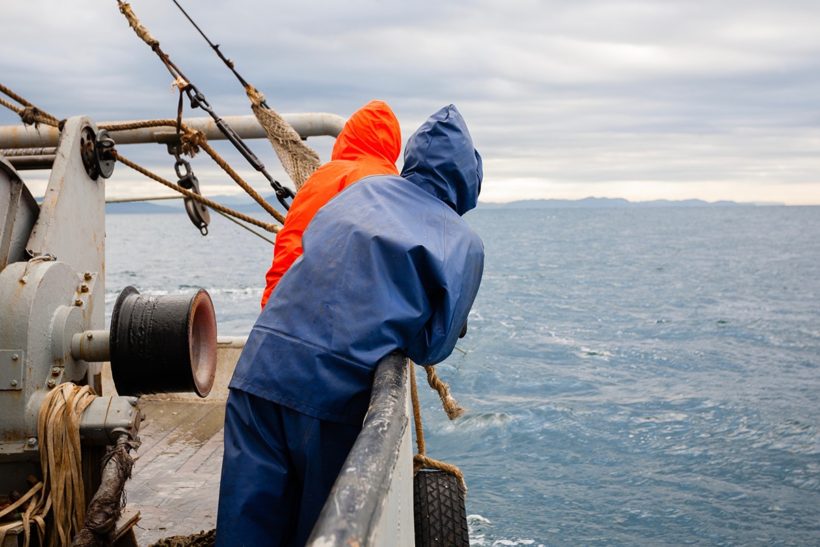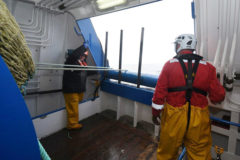In this occasional series, the Sunderland Marine team provides guidance on safe working and claims avoidance on fishing vessels.
This month, loss prevention executive Alvin Forster explores what can be learned in the aftermath of an incident, if time is taken to look beyond the initial causes
Things can and do go wrong. Regardless of best intentions to achieve a zero target when it comes to accidents, equipment fails, people make mistakes, and the unforeseen happens.
But throughout our lives, when things go wrong we learn from the experiences so that they don’t happen again. The same should apply to our work – in this case, fishing safety. When incidents occur, we should grasp the opportunity to learn, and this means investigating how they happened.
Purposes of investigations
Why do we carry out an investigation? Well, it depends on its purpose, and who it is for.
If it concerns a potential prosecution, then establishing responsibilities and dispensing justice could be the priority. Similarly, when a high-profile or tragic accident occurs and public interest is aroused, there is often an insatiable demand from mainstream and social media to find someone to blame.
An insurer or a legal claimant may take another view on the purpose of an investigation. Their priorities are likely to be around liability which, while related to blame, is not interchangeable with it.
Finding someone to blame might seem a neat and tidy solution. But focusing on this aspect can rob us of the opportunity to learn and to improve. Instead of focusing on the ‘who’, we should be looking more at the ‘how’.
Finding the cause
At Sunderland Marine, we get to see a lot of owners’ incident investigation reports from both the fishing and merchant shipping sectors. In most cases, an attempt is made to establish the ‘root cause’. Invariably, this is concluded to be one of the following:
- A person made a mistake – human error
- A person failed to follow procedures.
The owners’ investigation then stops at this point, and corrective actions are issued based on these ‘findings’. These typically include: the requirement for those involved to receive more training (or get sacked); the addition of more procedures; or the adding of another layer of oversight.
Will these corrective actions achieve anything and prevent the same thing happening again? There is a strong likelihood that they won’t, because the real reasons why the incident occurred have not been uncovered. ‘Human error’ and ‘failed to follow procedures’ are not root causes. They only scratch the surface, and should be the starting point for further investigation. Otherwise, we cannot properly learn from an incident.
Let’s look at these two factors in turn.
Human error
When an outsider comes along and looks at (or is told about) the apparent circumstances of an incident, their initial response is to question the competence of those involved, or conclude that they ‘lacked common sense’.
This approach – judging the actions of others based on what another individual thinks he/she would have done in the same situation – is unhelpful. Those involved didn’t have the benefit of hindsight, for example. When things go wrong, it often has nothing to do with competence or ability. Mistakes happen because of a decision (or decisions) made by those involved – and it’s vital to remember that those decisions made sense to them at the time.
A person makes 35,000 decisions a day! Our brains are constantly busy making decisions, so the person carrying out the investigation must focus on how those involved came to make their decisions. What influenced them? Was it time pressure, overload, stress, fatigue, or lack of resources or tools?
Put yourself in their shoes. Context is everything.
Failure to follow procedures
Safety management systems – when implemented correctly – are massively beneficial. But it’s important to remember that policies, procedures and checklists won’t stop things going wrong. Humans are not robots, and won’t follow procedures blindly.
So what are the possible reasons that someone might not follow the procedures? There are many, and it’s rarely because of a reckless disregard of systems. More likely, it is down to the fact that the set procedures are difficult (or in some cases impossible) to comply with, or that they are badly written and easily misunderstood. Maybe the individuals involved didn’t know where to find the right information?
There are other reasons why people ‘break the rules’, such as to save time or to maximise profits. This is sometimes under the misguided impression that they are helping the owner, rather than for their own benefit.
Digging deeper
Once a better understanding of what influenced the decisions of those involved is established – and why they deviated from the set procedures – there is an opportunity to learn much more about how the incident really happened, and to identify effective measures to prevent similar incidents from happening in the future.
When a cause is listed as ‘failed to follow procedures’, is the appropriate action to discipline the person involved and add more detailed procedures in the hope it will help future compliance? Or does it present an opportunity to find out if those procedures are really fit for purpose, and reflect the realities of working onboard?
To find out more, read our briefing on incident investigation here.
This story was taken from the latest issue of Fishing News. For more up-to-date and in-depth reports on the UK and Irish commercial fishing sector, subscribe to Fishing News here or buy the latest single issue for just £3.30 here.






